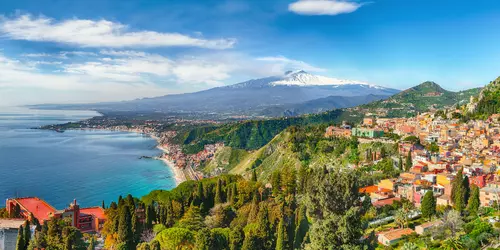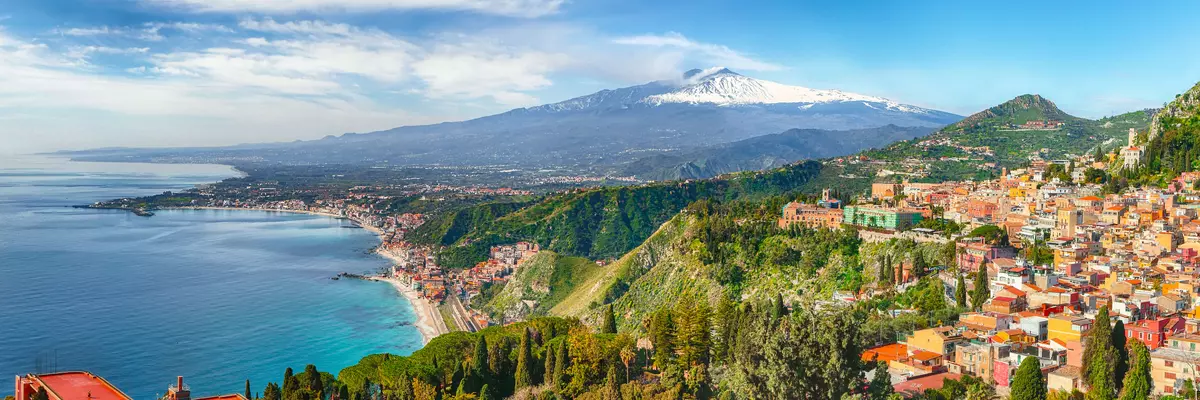The climate year of Sicily
Sicily is the rest of a land bridge from Europe to Africa and with 25,400 km² is the largest island in the Mediterranean Sea. The most famous and largest cities are Palermo, Catania, Messina and Syracuse. Sicily consists mainly of mountainous and hilly areas, the flat areas are in the south and near Catania. To the north, southeast and in the center of the island rise various mountain ranges and in the north additionally the Apennines. On the island thrive 3000 different plant species, some of which are even tropical and subtropical. In spring, many wildflowers line the roadsidesand orchids, jasmine and bougainvillea bloom everywhere. Mount Etna, at 3345 meters, is the highest peak in Sicily and the only active volcano in Europe. Average summer temperatures range from 26°C to 30°C, but due to the Scirocco, a wind blowing from the Sahara, the temperature can rise considerably in the south, reaching values above 40°C. In the interior of the island, temperatures hold back a bit in the summer with an average of 20°C and 5°C in the winter. In the winter months, frost and snow can occur at altitudes above 2000 meters.
General information about Sicily
The old town of Palermo no longer shines in the old and also not in new splendor. In the narrow streets of the city, the Vespas rattle with enormous volume and stench. Stinking garbage collects in the demolished old houses. The area around the market, however, is clean and the numerous palaces, churches and stately homes show what the once thriving city looked like and that it was once the most important cultural and economic center in Europe. One example is the dome of the Cappella Palatina, which is covered with golden mosaics. The experience of Syracuse is completely different with the Necropolis of Pantalica, a UNESCO World Heritage Site. A beautiful city with valuable archaeological evidence that reminds us of Magna Graecia. The poet Guy de Maupassant once said of Taormina that it was only a village, but it possessed everything that could seduce the eye, the mind and the imagination. It really is a jewel, Taormina, located between Messina and Catania.
Tourism Sicily
From May to October, Sicily offers bathing weather and hardly any rainfall. With air temperatures averaging 23°C to 31°C, a swim in the Mediterranean causes cooling, although the water temperature is 26°C. In Catenanuova, 48.5°C were measured on August 10, 1999, the highest temperature measured in Europe. Winter in Sicily lasts from January to March with 15°C to 8°C and about 12 rainy days per month. From the middle to the end of March, spring begins and the daytime temperatures rise to 21°C to 23°C, the sea water is warmed up to 18°C.

